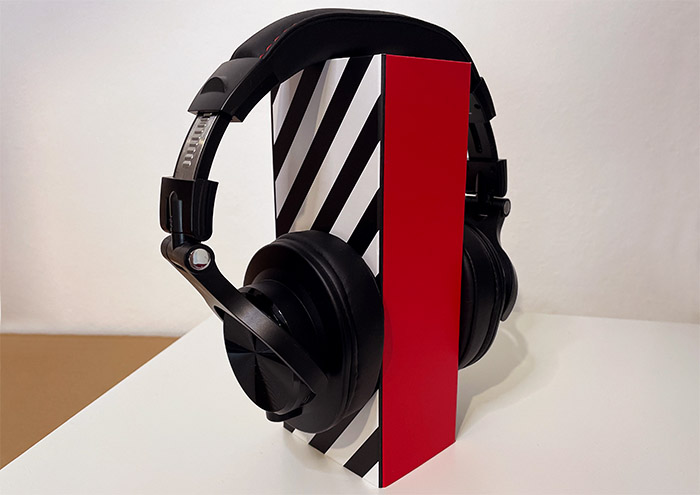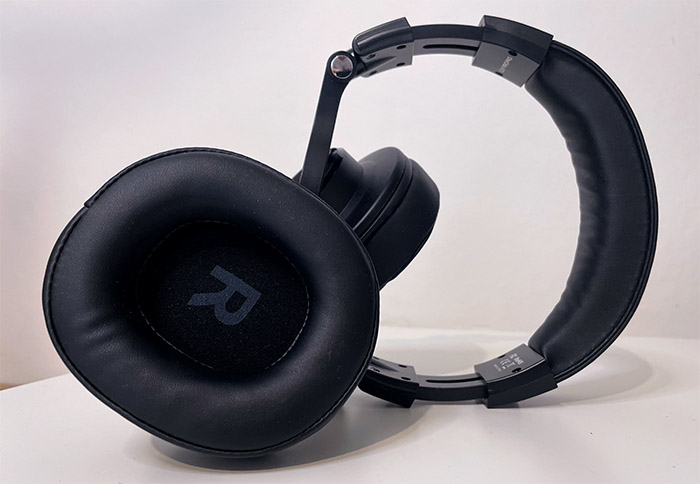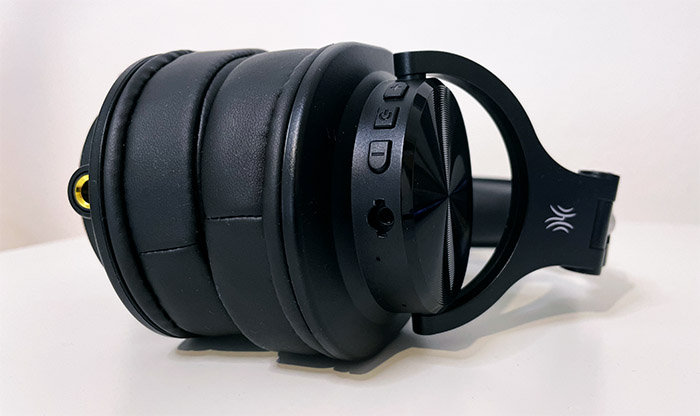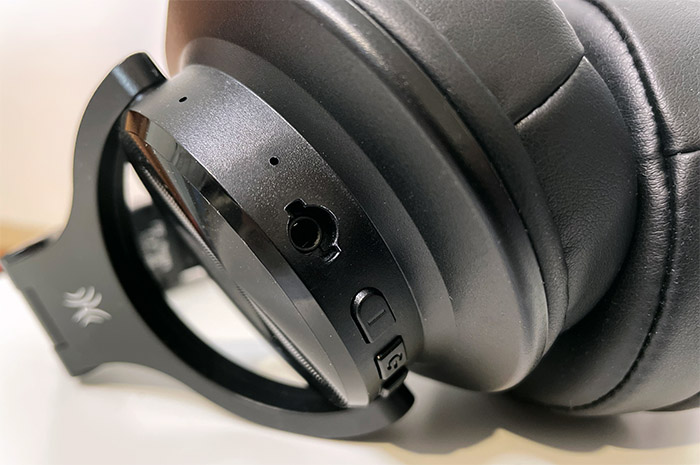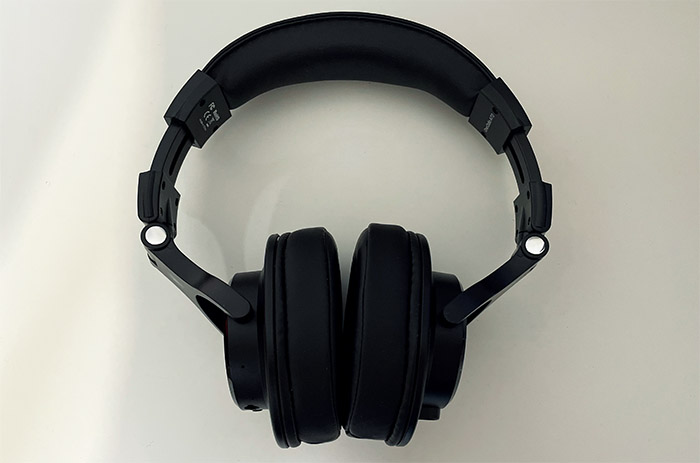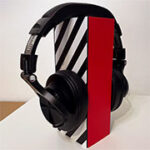The OneOdio A70 is trying its luck in a market that is actively pushing towards the wide adoption of Bluetooth earbuds, but it does seem to have what it needs to succeed. First of all, they’re very inexpensive. I would not imagine having Bluetooth headphones that sound good at anything underneath $100-$150, but nowadays, you go above this price tag only if you want something fancier (or more specific, such as the ANC technology).
| OneOdio A70 | |
|---|---|
| Amazon.com | Check Offer |
| Amazon.co.uk | Check Offer |
| OneOdio.com | Check Offer |
So, with a price tag below $50 (at the moment of writing), it will raise a few eyebrows in regards to the sound quality. The overall user feedback seems to be positive, but, after the not-so-great experience with Bluedio T7 Plus, I will put it to the test myself and see if they truly sound good. Besides the price tag and potentially a decent sound quality, the OneOdio A70 does have support for both 3.5mm and 6.35mm cables, and yes, you do get both in the package.
Also, the manufacturer says that the A70 is suitable for DJs, but what does that mean? It’s in relation to the aforementioned support for two types of cables which should help people that are in the sound industry (DJs, guitarists and so on) to get more connection options (well, two options) and it seems that the 3.5mm plug and be locked into place, so if you dance around with the headphones on, the cable will not disconnect. Which is great. Other than that, the OneOdio also promises a battery life of up to 50 hours if you decide to use Bluetooth, so let’s put these inexpensive headphones to the test and see how well they perform.
Build Quality and Design
It’s actually funny to realize that the OneOdio A70 is the second pair of headphones that (at the moment of writing) costs under $50 dollars and still has a better build quality than the Sony WH-1000XM3. And yes, the Sony WH-1000XM4 are no better. We’re still dealing with plastic, but it does feel of better quality, so I didn’t have to worry that taking the headphones off my head too many times will ruin the device. I do have to mention that the design of the OneOdio A70 is a bit strange and that’s mostly because the headband and the arm sliders form a very wide angle. I genuinely thought that it would be uncomfortable considering that my head is not that wide, but it was mostly fine. I say mostly because the earcups managed to cover my ears, but only barely despite fully extending the slider. Furthermore, there is a bit more pressure on the earcups than on other headphones, but they’re soft enough to partially neutralize some of that pressure.
You will still feel some fatigue after wearing the A70 for more than 3-4 hours. Each earcup is surprisingly soft considering the price tag of the headphones and I was also pleasantly surprised to see that the headband has some soft padding as well, not just a plastic support (as I saw on the Bluedio T7 Plus). The earcups can also be easily detached and replaced, if necessary – the fake leather may or may not hold for a very long time. The outer side of each earcup is pretty much identical to what I saw on the Bluedio T7 Plus, so I suppose that pattern is intended to give the budget-friendly headphones a somewhat premium look. And it kind of works, but again, a high price tag doesn’t necessary mean a good build quality. Be aware that the earcups do not support touch-sensitive control.
Before moving forward, I need to mention that the OneOdio A70 are available in four combination of colors, one is completely black (the device that I got), one is black with a bit of gold, another is red and black and the last one, which I think looks the best is the silver and brown variant. There are a few ports and buttons on the edge of each earcup, so let’s start with the left one. Here, you can find the microUSB port (which made me sad – why not a USB-C?) and the 6.35mm connector which you can use to attach the provided cable and either directly connect to your computer or you can use to connect to another pair of headphones. Indeed, you can inter-connect multiple headphones, so you and another person can listen to the same thing and it’s quite useful in long plane or train rides (I saw a very similar approach with the Bluedio T7 Plus).
The right earcup is home to a small charging LED (it will also light up when the headphones are connected to Bluetooth), a Power button (that also doubles as Play/Pause/Answer call/Hang up, depending on the situation) and a plus and a minus button. Intuitively, I was sure that these are for adjusting the volume and indeed they are, but if you long press them, you can change the track (next and previous). Lastly, I saw a microphone and the 3.5mm jack with its unusual shape – this is because the cable can be locked into place. It’s a real shame that the smartphones are getting rid of the 3.5mm jack, but all we can do is hope that the Bluetooth technology will get better. It currently isn’t, so if you still have a headphones port on your phone, it’s easy to use the OneOdio A70 – don’t get me wrong, you can still use Bluetooth, but there is a sensible difference in sound quality.
Internal Hardware and Connectivity
The OneOdio A70 is equipped with 40mm dynamic drivers which is the same as the Sony WH-1000XM3 and a bit below the 57mm of the Bluedio T7 Plus. This means that we may or may not get a fuller sound, the volume levels could be very high, but the sound quality should be unaffected – that’s the job of the fine tuning done by the engineers. Besides the size of the speakers, OneOdio has also disclosed the impedance which is 32Ohms. The A70 can be connected wirelessly to a compatible device and to do so, it uses the Bluetooth 5.0 which is among the newer versions and should ensure a good coverage (up to 30 feet) and enough bandwidth to be able to listen to some high quality music (the bitrate is usually way higher than when you listen to music from YouTube). In terms of codecs, I did not see any special one, so it’s just the basic types of codecs – no aptX.
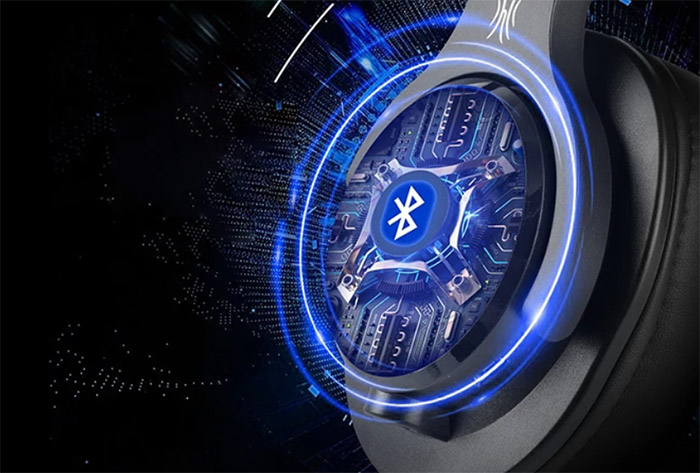
Sound Quality
The OneOdio A70 headphones do not have ANC and that’s for the best (for now) because the focus remained on producing good sound and not to add a half-backed feature just so it could be highlighted on the box. You do have to rely on the passive noise canceling which is not that great. I could hear pretty much everything that was going on around me, including my dear neighbors which never seem to stop from expressing their creativity vocally. The OneOdio A70 have three options to connect to your devices, either using the 3.5 or 6.35mm cables or by relying on Bluetooth. I have to admit that I saw no difference between the 3.5 and the 6.35mm connection in terms of sound quality, but, as expected, the Bluetooth connection is not going to be on par with the wired one.
Before playing some music, I decided to check out some of the more technical aspects of the headphones and to get an accurate picture, I connected them to my computer using the 6.35mm cable. This way, I ran a driver quality test, where the sweeping tone should have no buzz and I did hear some noticeable buzz – nothing terrible, but it definitely was there.
Next, I ran the driver matching test and the sound should be central and it was for the most time, but it would also sometimes move from left to right which is not good since it can create a vague 3D sound stage. Speaking of the 3D sound stage, I ran a few binaural recordings and it was surprisingly not bad (despite my previous statement). I could tell where every singer was, the instrument differentiation was decent, but the sound was sometimes busy and a bit flat (the Sony WH-1000XM3 is far cleaner and punchier – no surprise there since it’s far, far more expensive).
Now, for the audio experience itself, it’s pleasant if you take into consideration the reason why these headphones were created – mostly for mixing. The low bass is good, clearly defined, just as the mid and higher bass, but they all have one thing in common. They’re there and correctly reproduced, but they don’t have that visceral sound and end up a bit flat. It’s still better than most other headphones in this price range, but remember that the people that mix sounds do prefer to not have colorful or punchy bass, so in this regard, the OneOdio A70 works perfectly fine.
The mid-range sounds are again correctly reproduced, but not very emotional and the treble is also not bad, but it isn’t very colorful (so you won’t experience any fatigue). Although a very unfair comparison, I still put the OneOdio A70 next to my daily drivers, the Sony WH-1000XM3 and yes, the latter do sound better, with a more emotional and vibrant sound, but the A70 are not that far off.
And that says a lot about a pair of headphones that costs almost seven times less. If used for the intended purpose, they’re really good for the price, but even if used casually to listen to music on a plane or train, the sound is still decent enough to justify the cost of the headphones. Before moving on, I checked the A70 to hear if there’s any noticeable sibilance and, as expected, I played the ‘Empire of the Sun – Alive’. And it’s actually not bad, as I noticed a mild amount of sibilance, but it’s still better than on other headphones and earbuds in the same price range. Lastly, I decided to play the Caribou – Bowls song at a higher volume and yes, the OneOdio A70 can get very loud without noticing any distortions.
This song is very good at displaying the sound differentiation and it sounded great on the A70, surprisingly better than on the WH-1000XM3 and that’s because the slightly flatter sound profile will allow a more analytical ‘hearing’ of the song and will not induce any fatigue (if it’s too vibrant, you need to lower the volume). If you connect to your smartphone or computer via Bluetooth, the sound will be slightly impacted, as you will lose a bit of clarity, but it’s not very dramatic and the music should still sound almost as good as on the wired connection.
Call Quality
Since the OneOdio A70 has a single microphone, I was a bit skeptic at first whether it would be able to properly capture my voice in a call, but I was proven wrong. The person on the other side of the call said that they can’t tell the difference between when I was talking directly with my phone or when I had my headphones on, which is the ideal performance. I also tried talking to someone while I was in a crowded coffee shop and again, my voice remained in focus. I also heard the person loud and clear, so kudos to OneOdio in this regard, as they did a good job. I would have liked ANC to cancel out some of the outside sound, but considering the price tag, you can’t have them all.
Battery Life
If you like to use the A70 mostly using Bluetooth, which makes sense since too many smartphones lack a 3.5mm jack, then know that the headphones are equipped with a 950mAh battery and the advertised battery life is at about 50 hours. I used the OneOdio A70 for about a week and up to 4 hours a day, so I got about 28-30 hours, which is fine (although a bit below the advertised amount).
Conclusion
The OneOdio A70 headphones make it very clear that they’re suitable for DJs, so they should work great for mixing music. This means that you want the sound profile to be a bit flatter, not too colorful, which seems to be the case (there is even a graph in the user manual that shows the frequency response). So, for its intended purposes, the OneOdio A70 is a great pair of headphones which should cost far more for what it delivers – this includes the support for 3.5 and 6.35mm connections (as well as the cable). But, what about the casual user that simply wants to listen to music? They’re still fine, the instrument differentiation is good, the sound seems to be clear and correctly reproduced, but these are not the headphones that will make the music feel more dramatic or emotional. If you’re fine with that, definitely give them a chance since it’s hard to beat the A70s at this price point.
OneOdio A70
-Pros
- Has both a 3.5 and a 6.35mm jack + cables
- Supports daisy chaining
- The 3.5mm cable can be locked into place
- The sound profile is suitable for mixing
- The headphones are fairly comfortable
Cons
- The shape of the headphones is a bit awkward and may not properly cover the ears
- The passive noise canceling is pretty much nonexistent

Mark is a graduate in Computer Science, having gathered valuable experience over the years working in IT as a programmer. Mark is also the main tech writer for MBReviews.com, covering not only his passion, the networking devices, but also other cool electronic gadgets that you may find useful for your every day life.

